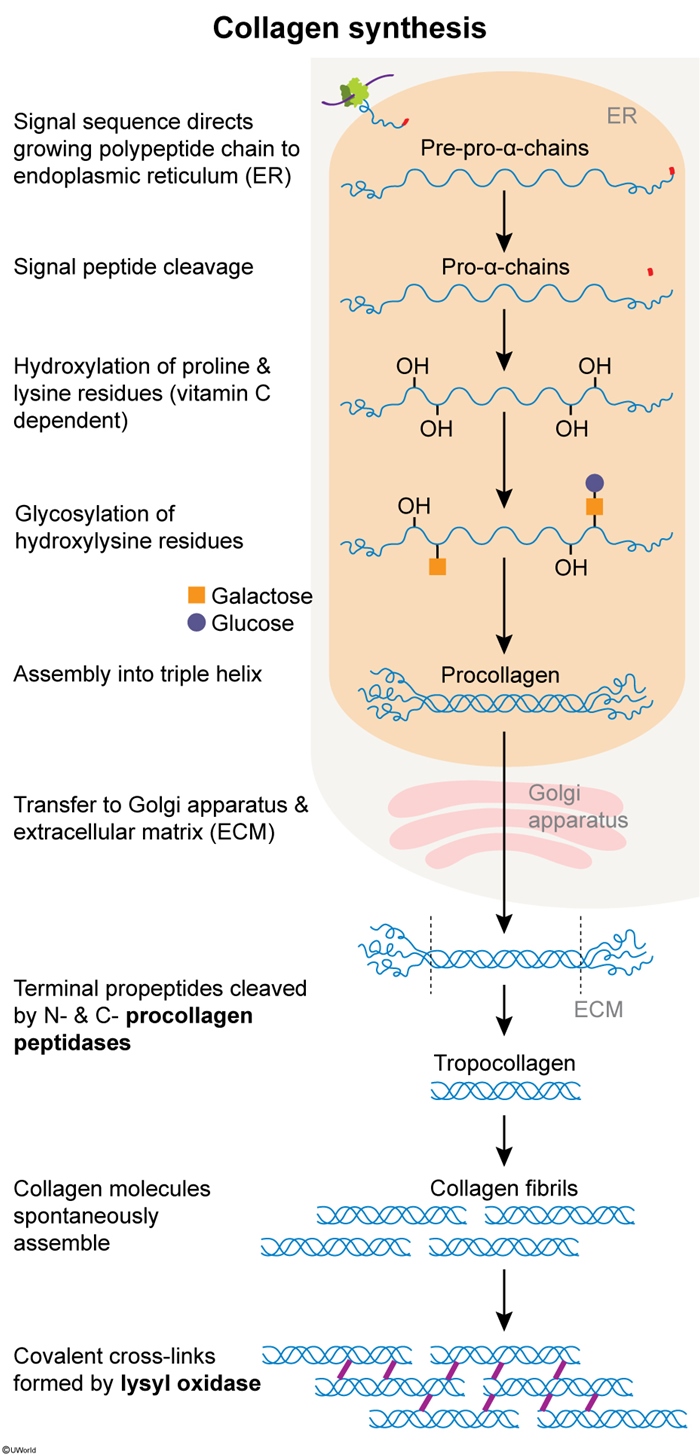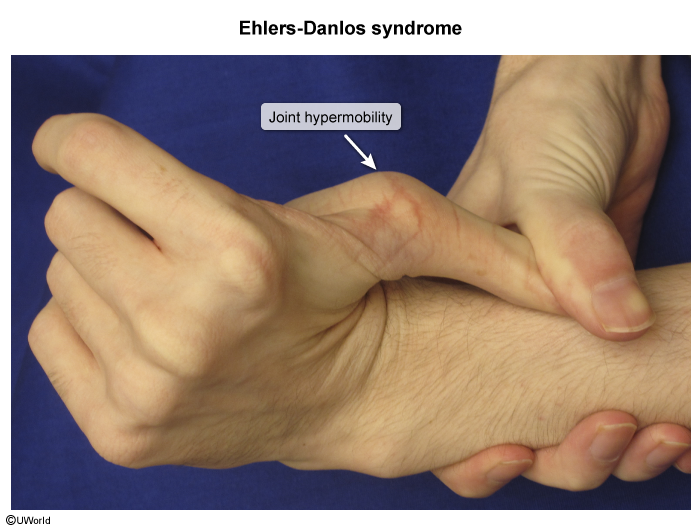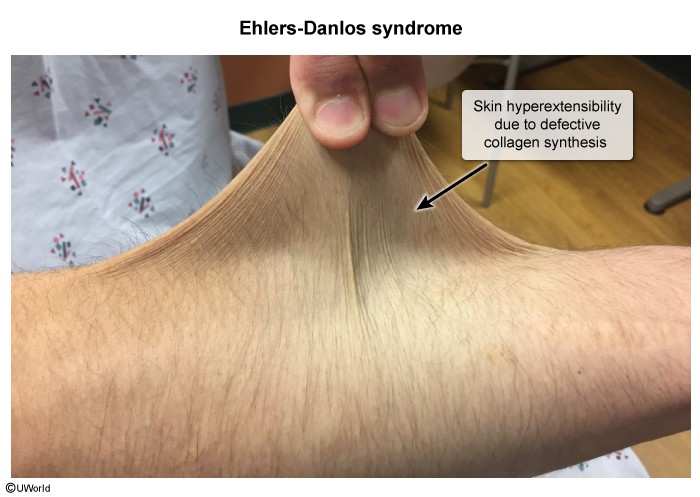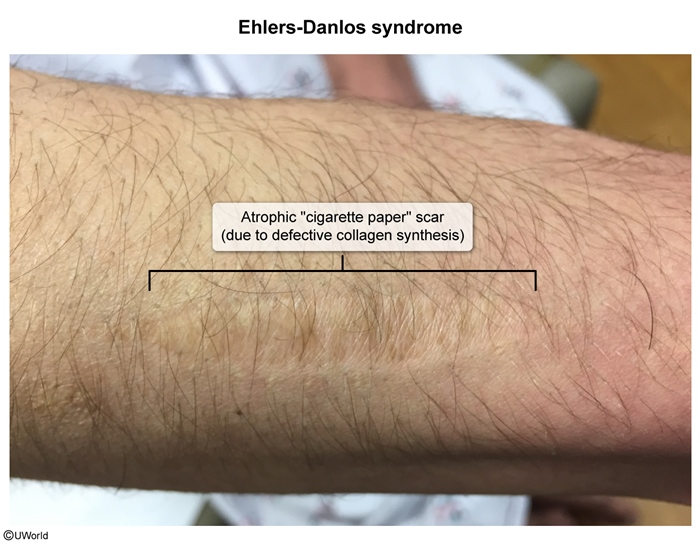Ehlers-Danlos Syndrome (EDS)
Article Sections
Introduction
Ehlers-Danlos syndrome (EDS) represents a group of inherited connective tissue disorders that share ≥1 of the following common characteristics: joint hypermobility, skin hyperextensibility, and tissue fragility. The syndrome consists of numerous subtypes with distinct genetic mutations affecting the synthesis and processing of collagen and other connective tissue components, giving rise to different clinical presentations with varying degrees of severity. The condition is rare, affecting 1 out of 5,000 people.
Pathophysiology
EDS is caused by defective synthesis or processing of collagen and other connective tissue components due to genetic mutations.
Collagen (Figure 1) is a major protein that provides tensile strength and flexibility to tissues. There are 5 main types of collagen, which are present in different tissues:
- Type I in skin, bones, tendons, and ligaments.
Continue Learning with UWorld
Get the full Ehlers-Danlos Syndrome (EDS) article plus rich visuals, real-world cases, and in-depth insights from medical experts, all available through the UWorld Medical Library.
Figures

Images


